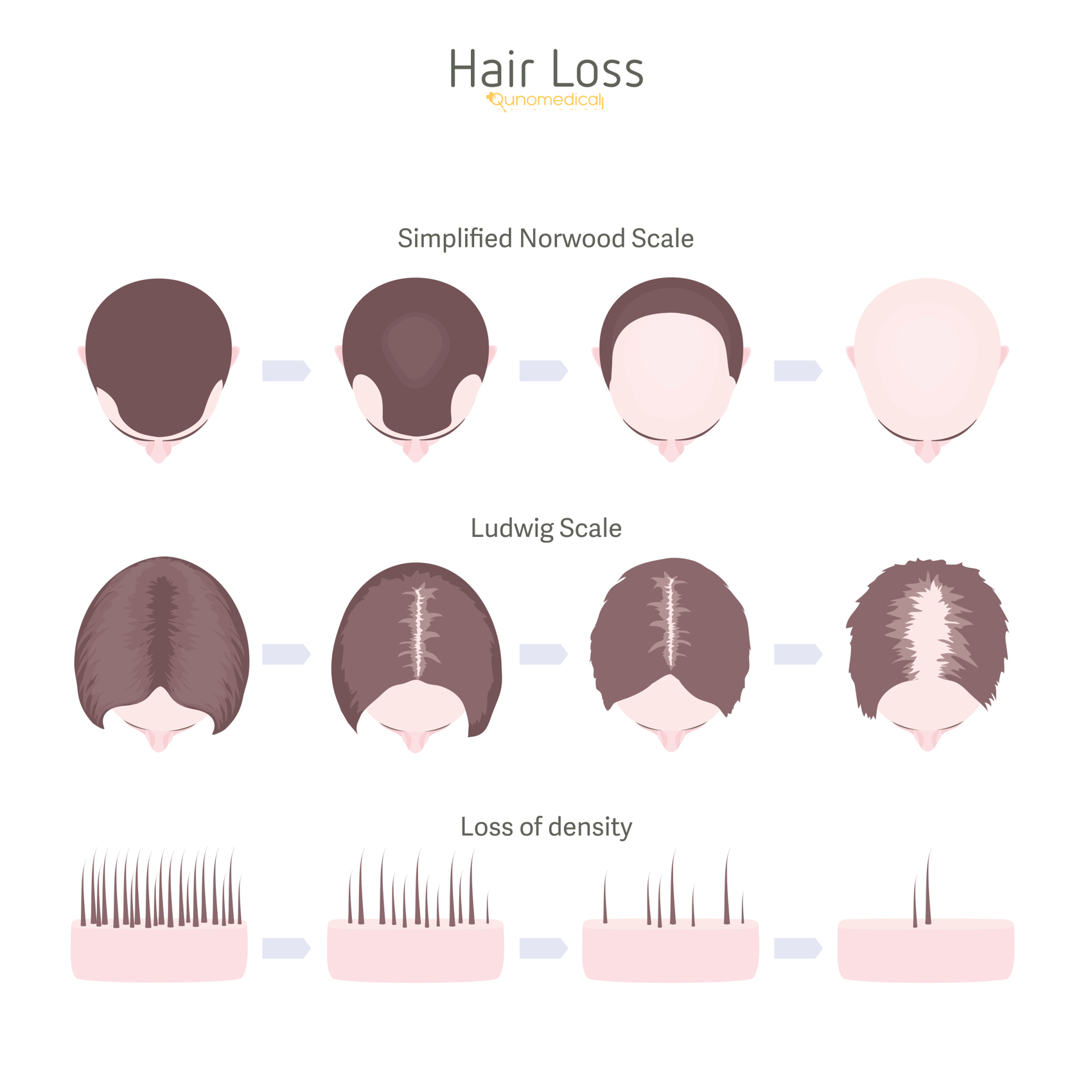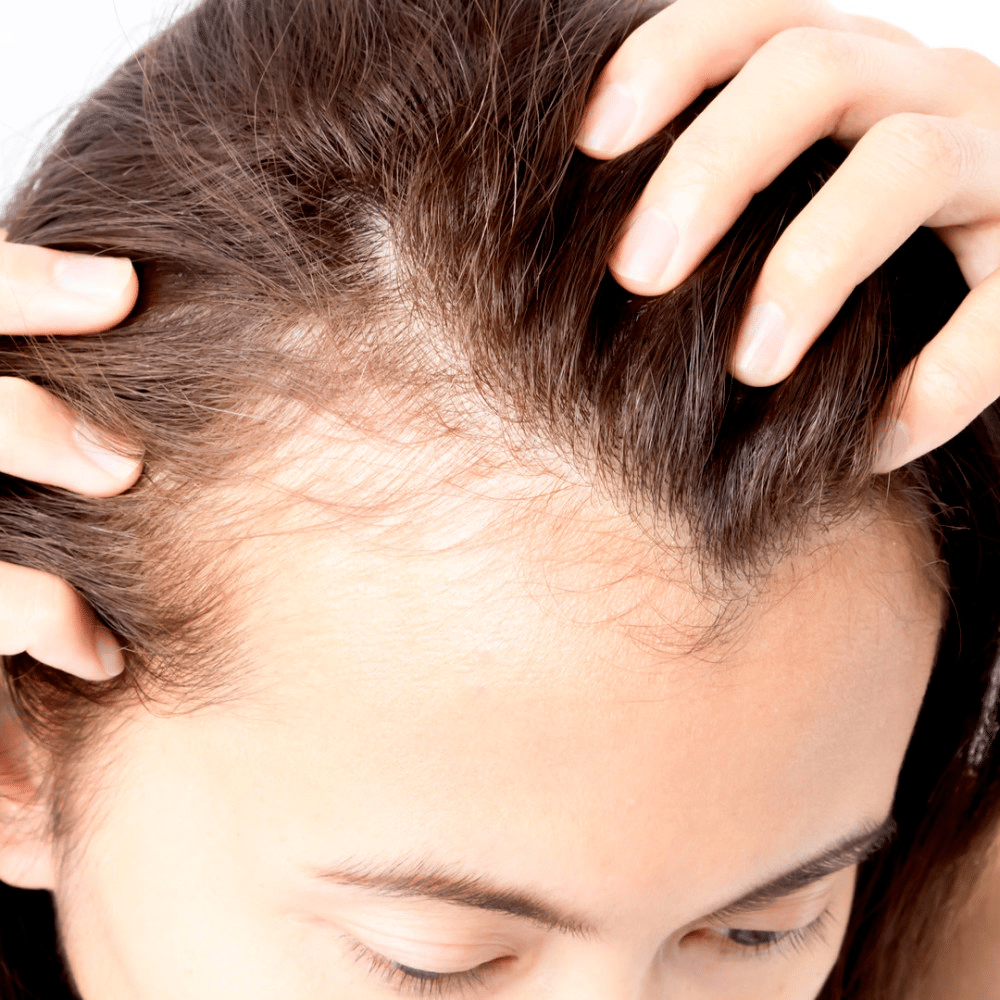Female Hair Transplants: All You Need To Know
Female hair transplants can be a great solution for many women who experience hair loss. While there may have once been a stigma surrounding the treatment, this is no longer the case thanks to new techniques and more natural-looking results. This growing trend is slowly making its way into the public eye, with some of the most prominent female celebrities undergoing the treatment. As well as this, the stabilization of female hair transplant costs in recent years has also opened up the treatment to a number of new patients.
When it comes to losing your hair, there are some similarities between male hair loss and female hair loss. However, there are also big differences surrounding the causes of the two. These differences mean that although male pattern baldness accounts for over 95% of hair loss in males — making a hair transplant a viable option for the majority — only 2%–5% of females who experience hair loss are suitable candidates for the treatment.

How Does Female Hair Loss Differ From Male Hair Loss?
Both men and women can experience hair loss, known medically as androgenetic alopecia, but you may also hear it commonly referred to as male or female pattern baldness. For both men and women, this type of hair loss typically occurs due to a combination of genetics, age, and hormones. However, the production of a few additional hormones and enzymes in women makes it more difficult to diagnose the exact cause of the hair loss, as well as causing it to present itself differently.
Male pattern baldness tends to present itself clinically. This essentially means that a specialist can usually understand the reasons behind the hair loss simply by looking at it and asking a few routine questions around family and medical history. For most men, hair loss usually takes the form of thinning or baldness on the front and top of the head. However, the hair on the back and sides often remains stable. While the degree and severity of the hair loss can vary — as demonstrated in the Norwood Scale — this is the usual pattern that is common in male pattern baldness.
However, in comparison, when women start to lose hair, it typically tends to be diffuse, meaning the hair thins all over the head and not just on the top. This is key as, in the case of men, the hair follicles that remain on the back and sides of the head are resistant to the dihydrotestosterone hormone (DHT), which is thought to be the cause of hair loss. Therefore, when the DHT-resistant hair follicles are transplanted from the back and sides of the head, to the top and front during a male hair transplant, their resistance to DHT is what prevents them from falling out in the future.
For female hair transplants, the diffuse hair loss means that there’s often not enough hair left on the back of the head to transplant to the front without leaving the hair on the back with much less density. As well as this, diffuse hair loss could indicate that the hair on the back of the head is not resistant to DHT, therefore any transplanted hair would likely fall out again in the future.
Common Types of Female Hair Loss
There are three main types of female hair loss: diffuse, patterned, and localized. Within localized hair loss, there are the additional designations sub-categories of scarring and non-scarring.
Diffuse
Despite diffuse hair loss being most common amongst women, patterned hair loss, similar to what’s commonly seen amongst men, is also possible. During this, the hair loss only occurs at the front and top of the head with little or no thinning of the hair at the back and sides.
Patterned
Women with patterned hair loss will also usually retain more of their front hairline, with the thinning taking place further back or in sections along the hairlines.
Women who experience patterned hair loss are often the most suitable candidates for a female hair transplant, since the retention of hair on the backs and sides of the head usually indicates a resistance to DHT. The Ludwig Classification breaks down the stages of this type of hair loss in females:

In the majority of cases, female hair loss is diffuse, with thinning occurring all over the head, rather than the tell-tale pattern than many men experience.
Localized
Localized hair loss refers to hair loss that appears in specific areas. Unlike the diffuse or patterned version, localized hair loss often results in bald spots appearing in distinct areas of the head in which the hair loss is occurring.
What Are the Factors That Can Cause Hair Loss Amongst Women?
Women’s hair can be susceptible to underlying, systemic health conditions and consequently hair loss often appears as a result or side effect of one of these conditions. For these reasons, it’s difficult to determine the cause of a woman's hair loss by simply looking at it, and so further diagnostic tests are often needed.
As previously mentioned, there are a variety of factors that can contribute towards female hair loss. In cases of diffuse hair loss, common causes can include certain medications like mood-altering drugs, birth control pills, nutritional deficiencies, gynecologic conditions, chemotherapy/radiotherapy, and stress.
Localized hair loss is more commonly caused by alopecia-related conditions, or as a result of an accident or injury.

It’s worth noting that in cases where diffuse hair loss is caused by a specific medication, this is often falsely diagnosed as a genetic hair loss condition. However, once you stop taking the medication, the hair loss will most likely stop. The same is often true for chemotherapy or radiotherapy, although the hair may not be as thick as it previously was.
Women who have taken medication that has caused hair loss, or those who have gone through therapies such as chemotherapy, could be eligible for a female hair transplant. However, this eligibility is also often dependent on where the hair has been lost and if the remaining hair is strong and DHT-resistant.
I Am Experiencing Hair Loss: Am I Eligible for a Female Hair Transplant?
First things first, it’s important to remember that hair transplants for women are typically only viable for those who have lost hair on the top of their head, but the hair on the back and sides is still dense, strong, and DHT-resistant. Therefore, it’s best to have a dermatological consultation to confirm that this kind of treatment is a realistic option for you.
With these points in mind, we’ve laid out a brief outline of the types of hair loss that generally respond well to a female hair transplant.
Female pattern baldness: Thinning hair on the top and crown of the head with little or no thinning on the back and sides of the head.
Mechanical or traction alopecia or alopecia marginalis: Hair loss appears at the front hairline, temples, and sometimes the sides of the head. Often occurs as a result of the continuous use of hairstyles that pull the hair tightly.
Hair loss due to plastic surgery: Most commonly this includes women who have had treatments such as facelifts or brow lifts and wish to conceal visible incision scars.
Hair loss due to trauma: This often relates to injuries such as burns (fire or chemical), however, it can also be applicable for a variety of other accidents or injuries.
Naturally high hairlines: Usually women in this category undergo a female hair transplant in an attempt to lower the hairline by a few centimeters.
Transgender individuals transitioning from male to female: In these cases, the individual commonly wishes to create a more feminine hairline to frame their face.
Once you’ve been through the consultations with your doctor and you’ve shown to be eligible for a hair transplant, your specialist will then discuss which specific hair restoration technique is most suitable. The most popular one used is known as Follicular Unit Extraction (FUE), however, both the Follicular Unit Transplantation (FUT) and Direct Hair Implantation (DHI) techniques are viable options.

Female Hair Transplants: Preparing for Surgery
Before you can undergo a hair transplantation, you’ll need to visit a hair loss specialist for initial consultations and tests. Your specialist will perform a variety of tests to confirm what is the likely cause of your hair loss.
Before these tests though, it's important to see your head and your hair loss in detail. When you contact Qunomedical, we’ll ask you to send us a few pictures of your head from the front, top, back, and sides. This will help us, and your doctor, get an initial evaluation about your hair loss and your eligibility for a female hair transplant.
However, because female hair loss can have a myriad of causes and is difficult to assess by sight alone, your doctor may also carry out extra examinations such as a microscopic hair evaluation, a pluck or pull test, scalp biopsy, or a blood test.
If you have already spoken to a doctor and they have recommended a hair transplant to you, then one of our Patient Managers can help you to get this treatment journey started! Contact us and we’ll provide you with information on a range of Qunomedical approved clinics, abroad and at home. You’ll be able to view specific doctor profiles, read real reviews, and choose a treatment plan based on criteria that matters to you. You can also check out our hair transplant cost guide for a more detailed view on pricing.
Female Hair Transplants: Are There Any Alternative Options?
If you find that a female hair transplant is not quite right for you, or that you’re not eligible for the treatment, then don’t worry. Female hair loss often responds well to other kinds of medical interventions. Here are a selection of suggested treatments that you may want to consider.
Topical solutions: One of the most popular ones here is Minoxidil (often sold under the brand names Regaine or Rogaine), which has been shown to help slow down female hair loss.
Platelet rich plasma (PRP): An alternative, innovative treatment which involves extracting and concentrating blood and injecting into the head to regenerate lost hair.
Laser therapy: This uses low-level laser light to reduce hair loss and help stimulate hair growth. However, strong evidence for this treatment is still lacking somewhat, with further scientific research needed.
Scalp micropigmentation (SMP): This involves a cosmetic tattoo that mimics shaven hair and can be used to fill in thinning areas, giving the appearance of more volume.
Cosmetics: Hair coloring, for example, can be used to reduce the contrast between the skin and hair color. Alternatively, hair fibers are also an option for giving the appearance of fuller hair.
Before spending time and money on a female hair transplant, or an alternative treatment, it's important to first figure out the underlying cause behind your hair loss. Contact Qunomedical and we can get your treatment journey started with initial consultations, clinic and doctor information, booking assistance, and much more!
Find the Right Specialist at a Fraction of the Cost
Qunomedical only lists clinics and doctors that have been thoroughly vetted with quality and affordability in mind. Contact us for your 100% free, non-binding assessment.

Patient manager
Frieda
Your personal Patient Manager
Let's talk
Still unsure? Feeling overwhelmed? Talking to a real person can give you the guidance and reassurance needed. You don’t have to do it alone. Let’s find the right doctor together.
